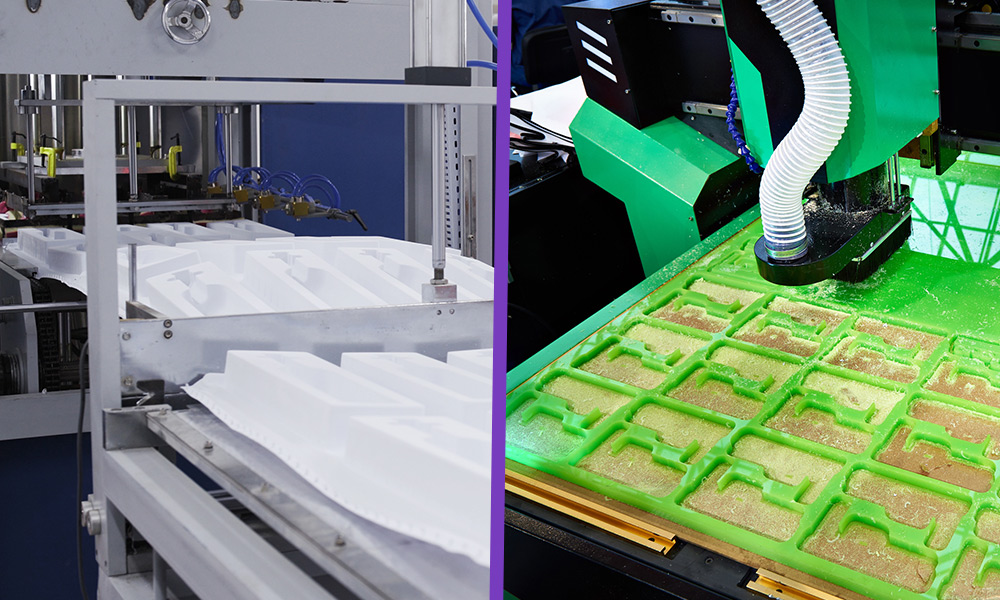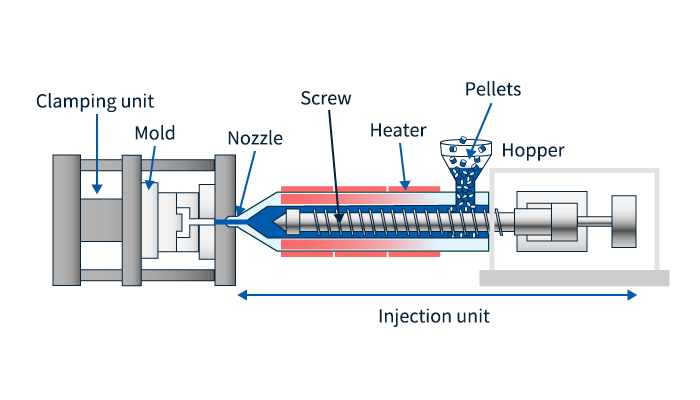How Plastic Injection Molding Drives Performance in Automation
How Plastic Injection Molding Drives Performance in Automation
Blog Article
Understanding the Essentials of Plastic Injection Molding Processes
Plastic injection molding serves as a keystone of modern-day production, providing a systematic strategy to generating intricate components with accuracy. Exploring these crucial elements could disclose exactly how even small modifications can lead to substantial enhancements in production outcomes, increasing inquiries concerning the possibility for development in this recognized process.
What Is Plastic Injection Molding?
Plastic injection molding is a commonly used manufacturing procedure that transforms polycarbonate and thermosetting materials into precise and complicated shapes. This strategy is preferred for its ability to generate high volumes of the same parts with extraordinary accuracy, making it an indispensable method in various sectors, including automotive, customer goods, and medical tools.
The process includes thawing the chosen plastic product and injecting it into a mold under high stress. The mold and mildew, designed to the specifications of the desired part, allows the molten plastic to form as it strengthens and cools down. As soon as the material has set, the mold and mildew is opened up, and the ended up part is expelled.
Plastic shot molding provides a number of advantages, including lowered waste, consistency in manufacturing, and the capacity to integrate elaborate styles that may be testing with other manufacturing methods. Furthermore, it supports a wide series of products, each supplying special buildings that can be tailored for certain applications. As sectors remain to innovate, plastic shot molding continues to be at the center, enabling the growth of sophisticated items that fulfill progressing customer needs.
The Shot Molding Refine
The shot molding procedure is an innovative strategy that entails a number of essential phases to produce premium plastic parts. At first, plastic pellets are fed into a warmed barrel where they are merged a viscous fluid. This molten plastic is after that injected under high stress into a precision-engineered mold and mildew, which forms the material into the preferred form.
When the mold and mildew is loaded, the plastic is enabled to cool and strengthen, taking the form of the mold and mildew tooth cavity. Air conditioning time is important, as it impacts the cycle time and the last residential properties of the shaped part. After enough cooling, the mold and mildew opens up, and the ended up component is ejected utilizing ejector pins.

Materials Utilized in Injection Molding
Numerous products can be used in the shot molding process, each offering special properties that deal with certain applications. One of the most commonly made use of products consist of thermoplastics, thermosetting plastics, and elastomers.

Thermosetting plastics, like epoxy and phenolic materials, undertake a chemical change during the curing procedure, leading to an inflexible, inflexible structure. These products are ideal for applications requiring high warmth resistance and structural honesty, commonly used in auto parts and electrical insulators.
Elastomers, including silicone and rubber-based products, offer versatility and strength. Their unique properties make them suitable for applications that require flexibility, such as seals and gaskets.
Additionally, specialty products like bio-based plastics and composites are acquiring grip for their environmental advantages and improved performance characteristics, broadening the range of shot molding applications in numerous sectors. Comprehending the properties of these materials is important for choosing the appropriate type for particular jobs.
Benefits of Shot Molding
Shot molding sticks out as a very reliable manufacturing process that uses many advantages for producing intricate parts with precision. One of the most considerable benefits is the ability to create intricate styles that would be challenging or difficult to attain with various other techniques (Plastic Injection Molding). The process webpage enables thorough attributes and limited resistances, guaranteeing top notch parts
Furthermore, injection molding is recognized for its rapid production capacities, making it an excellent option for high-volume manufacturing. As soon as the mold and mildew is developed, parts can be created rapidly, reducing preparations and boosting overall performance. This effectiveness not just decreases manufacturing costs however additionally supplies a competitive side on the market.
The flexibility of products utilized in shot molding further boosts its charm. A vast array of thermoplastics and thermosetting polymers can be utilized, permitting suppliers to choose go to this web-site products that best meet their particular needs, including versatility, warmth, and toughness resistance.
Furthermore, the procedure decreases waste, as excess material can commonly be recycled and reused. This sustainability element adds to a lowered environmental effect, making shot molding a liable production selection. Overall, the advantages of shot molding make it a favored method for many markets.
Aspects Influencing Product High Quality
While many variables can influence item top quality in shot molding, recognizing these components is critical for achieving optimal results. Secret facets include product option, refining parameters, and mold style.
Material choice plays a crucial duty, as various polymers show one-of-a-kind buildings that affect flowability, strength, and thermal security. Poor product choice can result in problems such as warping or incomplete filling.
Processing parameters, consisting of stress, temperature level, and cycle time, have to be diligently regulated. Variations in these settings can lead to variances partially dimensions and surface area coating. Excessively high temperatures may create deterioration of the polymer, while inadequate stress can result in brief shots.
Mold layout is similarly essential, as it identifies the circulation of the molten plastic and the cooling process. Inadequately made mold and mildews may cause uneven cooling prices, leading to dimensional inaccuracies and recurring stresses.

Final Thought
Finally, plastic injection molding acts as a critical manufacturing procedure that makes it possible for the reliable production of high-grade elements. Mastery of the injection molding process, including the understanding of materials and the impact of numerous variables on item top quality, is necessary for accomplishing optimal results. discover here The advantages of this method, such as cost-effectiveness and layout versatility, additional underscore its significance throughout several industries, strengthening its condition as a favored choice for high-volume production.
Plastic injection molding serves as a foundation of modern manufacturing, offering a methodical strategy to creating complex parts with precision.Plastic injection molding offers numerous advantages, including lowered waste, consistency in production, and the ability to include complex designs that may be testing with other manufacturing techniques (Plastic Injection Molding). As industries continue to innovate, plastic shot molding remains at the leading edge, making it possible for the growth of sophisticated items that meet evolving customer demands
The shot molding process is an advanced technique that entails a number of vital stages to generate top quality plastic components.In final thought, plastic shot molding serves as a critical manufacturing process that allows the reliable manufacturing of premium elements.
Report this page